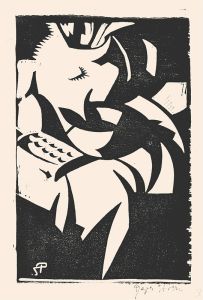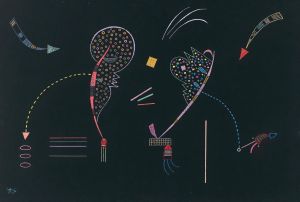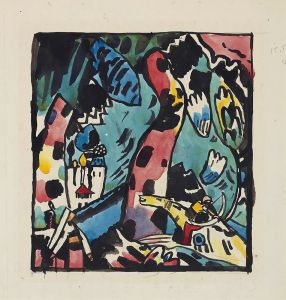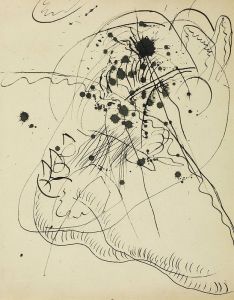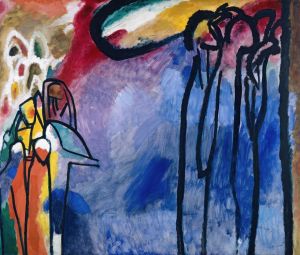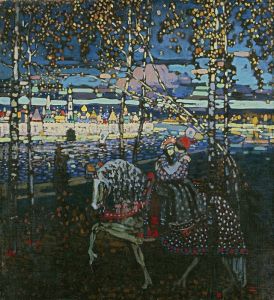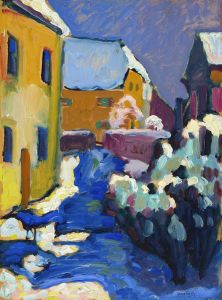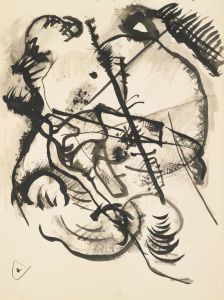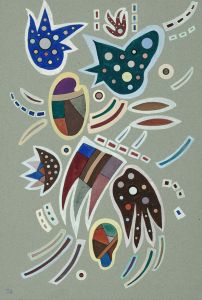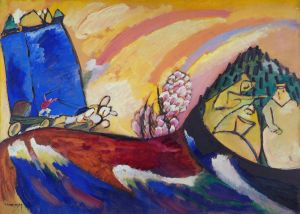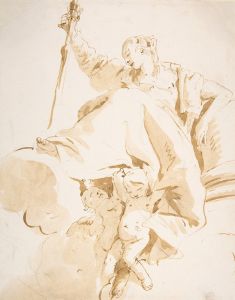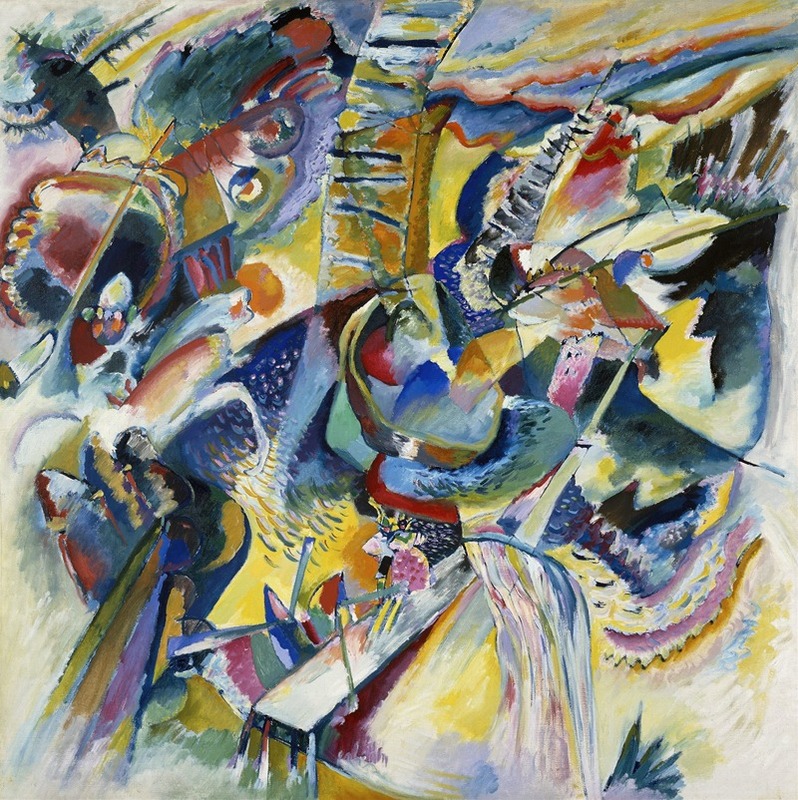
Improvisation Klamm, 1914
A hand-painted replica of Wassily Kandinsky’s masterpiece Improvisation Klamm, 1914, meticulously crafted by professional artists to capture the true essence of the original. Each piece is created with museum-quality canvas and rare mineral pigments, carefully painted by experienced artists with delicate brushstrokes and rich, layered colors to perfectly recreate the texture of the original artwork. Unlike machine-printed reproductions, this hand-painted version brings the painting to life, infused with the artist’s emotions and skill in every stroke. Whether for personal collection or home decoration, it instantly elevates the artistic atmosphere of any space.
"Improvisation Klamm" is a painting created by the Russian-born artist Wassily Kandinsky in 1914. Kandinsky is often credited as one of the pioneers of abstract art, and his works are known for their vibrant colors and complex compositions that seek to evoke emotions and spiritual responses rather than depict the physical world.
"Improvisation Klamm" is part of Kandinsky's series of "Improvisations," which he began in 1909. These works are characterized by their spontaneous and intuitive approach, reflecting Kandinsky's interest in the expressive potential of color and form. The term "improvisation" in the context of Kandinsky's work suggests a parallel to musical improvisation, where the artist allows the subconscious to guide the creative process, resulting in a composition that is both dynamic and fluid.
The painting itself is an exploration of abstract forms and vivid colors, typical of Kandinsky's style during this period. It features a complex interplay of shapes and lines, with a palette dominated by blues, reds, and yellows. The composition is energetic and chaotic, yet it maintains a sense of harmony and balance, reflecting Kandinsky's belief in the spiritual power of art.
Kandinsky's work during this period was heavily influenced by his theoretical writings, particularly his seminal book "Concerning the Spiritual in Art," published in 1911. In this text, Kandinsky articulated his belief that art should transcend mere representation and instead convey deeper spiritual truths. He argued that colors and forms could evoke emotions and spiritual experiences, much like music, which he saw as the most abstract of the arts.
"Improvisation Klamm" exemplifies these ideas, as it does not depict any recognizable objects or scenes but instead uses abstract elements to evoke a sense of movement and emotion. The painting's title, "Klamm," which can be translated from German as "gorge" or "ravine," suggests a natural landscape, but the work itself does not provide any literal representation of such a scene. Instead, it invites viewers to engage with the painting on a more intuitive and emotional level.
The year 1914, when "Improvisation Klamm" was created, was a tumultuous time in Europe, with the outbreak of World War I. This period of uncertainty and upheaval may have influenced Kandinsky's work, as he sought to express the inner emotional and spiritual realities that lay beneath the surface of the visible world.
Kandinsky's contributions to art extend beyond his paintings; he was also a key figure in the development of the Bauhaus school, where he taught from 1922 to 1933. His ideas about the spiritual and emotional power of art have had a lasting impact on the development of modern art, influencing generations of artists who followed.
"Improvisation Klamm" remains an important example of Kandinsky's innovative approach to abstraction and his commitment to exploring the spiritual dimensions of art. The painting is held in high regard within the art community and continues to be studied and appreciated for its bold use of color and form, as well as its ability to evoke a profound emotional response.





